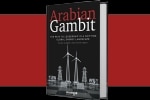Wellness tourism offers considerable potential for the GCC region, given the expanding global market for health and wellbeing. This opportunity complements these countries’ tourism ambitions. GCC governments are prioritizing tourism through national-level programs, and large-scale projects and resorts, such as Saudi Arabia’s AlUla, its Red Sea project, Diriyah, Qiddiya, and NEOM. To develop the region’s untapped potential, GCC governments should foster talent, invest in infrastructure, target international marketing, and foster domestic demand.
The growth in wellness tourism reflects increasing awareness of mental health, longevity, stress management, and preventive healthcare. Popular wellness tourism offerings include spas, nutrition programs, alternative therapies, meditation, fitness classes, health assessments, and stress management programs. The Global Wellness Institute projects that this market will grow at a compound annual growth rate (CAGR) of around 17%, reaching $1.4 trillion by 2027.i Although the Middle East, including the GCC, currently accounts for only 2% of this global market, it has promise. According to the Global Wellness Institute, the Middle East market has been the fastest growing region in terms of wellness tourism spending.
The wellness tourism market in the GCC has significant untapped potential because of the region’s diverse landscapes, traditional healing practices, and government initiatives. GCC countries have taken significant measures to encourage wellness tourism and build on these advantages. Traditional Arabic healing practices can be a key differentiator. They are integrating wellness tourism into their economic diversification and tourism-infrastructure development plans, bidding to become global wellness hubs. Oman is developing coastal, mountain, and thermal spring resorts.ii Qatar is building new wellness resorts.iii
The GCC region can cater to affluent visitors through high-end luxury wellness resorts. The region’s deserts, coastlines, and high-altitude areas provide settings ideal for wellness, such as Six Senses Zighy Bay in Oman.iv Incorporating local culture enhances the appeal, as demonstrated at Zaya Nurai Island in Abu Dhabi, where treatments are inspired by Bedouin traditions and regional herbs.v Destinations like AlUlavi in Saudi Arabia and Anantara Al Jabal Al Akhdarvii in Oman provide curated immersive programs focused on rejuvenation, mindfulness, detoxification, and meditation. Cities like Dubai are integrating wellness into urban hospitality, offering wellness services for both tourists and residents. GCC countries can also learn from how La Mamounia hotelviii in Morocco combines ancient healing traditions with modern luxury, offering treatments using locally sourced herbs and oils.
To capitalize on their wellness tourism advantages, GCC countries can take the following actions:
Government entities and service providers should collaborate to develop talent. The sector requires highly trained professionals, such as holistic health practitioners, nutritionists, fitness coaches, wellness therapists, and others. Operators can meet rising demand in the short term by recruiting wellness specialists internationally. In the long term, operators should partner with authorities to provide specialized training and certification programs that deepen the domestic talent pool and in return seek their support in strengthening such tourism capabilities as marketing and distribution. For example Saudi Arabia’s Ministry of Tourism and Accor Groupix have established a partnership to develop local talent, and IHG Hotels and Resorts is developing the skills of its Saudi employees and planning to create 6,000 jobs in Saudi Arabia by 2030.x
Owing to their unique landscape, many potential wellness destinations are in rural or remote regions that require improved access and facilities. Governments, working with regional development authorities or private companies, need to invest in infrastructure. They should identify regions of high potential for wellness tourism and support infrastructure development in those areas as there is a value to focusing on wellness as a differentiator. Developing the wellness destinations in nearby cities with better infrastructure also helps.
National tourism authorities and operators should launch targeted campaigns in international markets. They should emphasize the region’s unique wellness offerings through international marketing campaigns, exhibiting at global events, forming alliances with the tourism authorities of their target markets. Already, some GCC destinations are attracting favorable press attention in key markets.xi
National tourism authorities and operators jointly should foster domestic demand. They can target their national market with wellness offerings through newsletters, social media campaigns, educational seminars, partnerships with local businesses, along with fairs and events for in-person demonstrations. In these ways they can deepen awareness and understanding of wellness among domestic consumers, who currently perceive wellness as indulgence rather than pro-active self-care. One of the success stories are India’s National Strategy Roadmapxii and the efforts led by Ministry of Tourism, India at conducting webinars that increased domestic wellness tourism.
With their unique landscapes, cultural heritage, and ambitious government plans, GCC countries can emerge as global leaders in wellness tourism.
This article originally appeared in Hotelier Middle East, April 2025.
In the news
How the GCC can succeed at wellness tourism
Wellness tourism offers considerable potential for the GCC region, given the expanding global market for health and wellbeing. This opportunity complements these countries’ tourism ambitions.

Contact us













Menu